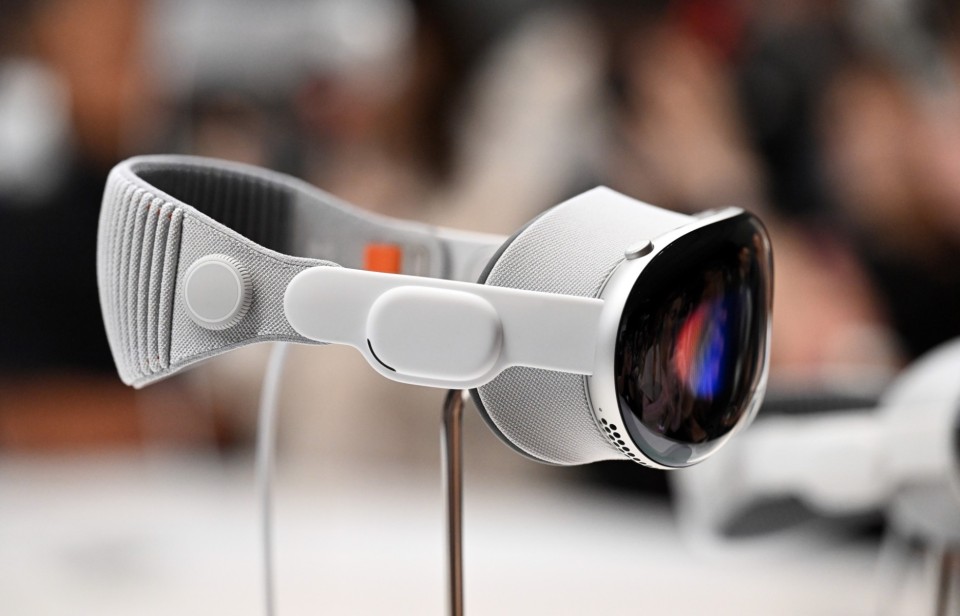
CUPERTINO, United States (AFP) — Apple on Monday unveiled its first-ever mixed reality headset, challenging Facebook-owner
Meta in a market that has yet to tempt users beyond videogamers and tech geeks.
The release was the most significant product launch by the iPhone maker since it unveiled
the Apple Watch in 2015.
The Vision Pro, which was generally well received on Monday, will cost a hefy $3,499 and be
available early next year in the United States only, the company said.
“There are certain products that shif the way we look at technology and the role it plays in
our lives,” said Apple CEO Tim Cook as he unveiled the sleek VR device that resembled ski
goggles.
“We believe Apple Vision Pro is a revolutionary product with the performance, immersion and
capability that only Apple can deliver,” he added.
The headgear, which Apple referred to as a spatial computer, was introduced at the close of
an Apple event in Cupertino, California in which the company announced a long list of
product updates.
The product has been in development at Apple for years, and will focus on gaming, streaming
video and conferencing.
Company executives insisted that the Vision Pro ofers an unchallenged experience, making
the hard sell on tech that has yet to win the hearts of the greater public.
Unlike its rivals, the Vision Pro is focused on being a mixed reality technology that “clearly
situates the user in their environment,” said Steve Severinghaus of Insider Intelligence.
Whereas Meta Quest and other devices are virtual reality-first, Vision Pro keeps the user in
the present and emphasizes the mixed reality features — unless they choose otherwise,” he
added.
Apple went to great lengths to preserve its signature design minimalism, at least to the extent
that it could, given the technology squeezed into the Vision Pro.
The device has a glass front, an aluminum frame, five sensors, 12 cameras, a display for each
eye, and a computer that is cooled with a fan.
Smaller than a scuba diving mask, Vision Pro will run mainly by being plugged into the wall in
a clear efort to preserve a sleeker design than bulkier headsets.
A cord-attached battery pack, which would slide into your pocket, would work for no more than two hours.
– ‘Blown away’ –
Tech companies have struggled to sell virtual reality headsets to a wider audience that is
uncomfortable with wearing a mask.
In an efort to overcome that resistance, internal cameras on Apple’s version will project the
user’s eyes on an external screen.
“As a non VR believer, I was actually blown away by how seamless the experience is,” said
tech analyst Carolina Milanesi of Creative Strategies.
“I was in an immersive experience and somebody started talking to me and that person
materialized next to me. I could see them and they could see my eyes and we could have a
conversation,” she added.
Milanesi added that she would feel safer wearing the Vision Pro compared to ther headsets
that leave you blind to the outside world.
Disney partnered with Apple for the launch and the Mickey Mouse company teased content
from Marvel, Star Wars and live sports that would be available on the device and provide an
immersive experience.
Apple said that over 100 video games would be available from the day of release.
– Collision course –
The release puts Apple on a collision course with Meta, which had taken a head start on
doubling down on virtual worlds.
Just days before Apple’s event, Meta ramped up its line of much cheaper Quest virtual reality
headgear.
A new-generation Quest 3 will be available later this year at a starting price of $500.
Meta’s experience with the so-called metaverse has been humbling despite it being a leader
in the emergent sector and many questioned whether Apple would in the end jump in.
Less than two years afer changing its name to Meta to reflect a metaverse priority, the
Facebook giant has fired tens of thousands of staf and promised to get back to its social
media basics.







